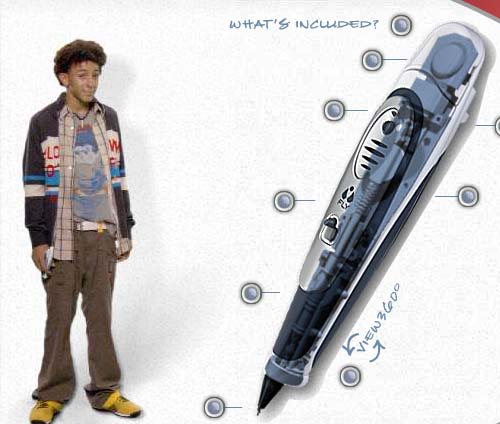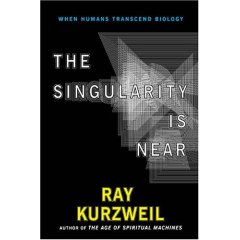The following discussion about a proposed exercise for a high school or college class began in an email exchange yesterday with Bob, Virginia Kuhn and Karl Stolley (Virginia and Karl are both teachers of rhetoric and composition and great intellectual partners of the institute). We thought it was getting interesting so we decided to slap it up here on the blog as a thought experiment. Please join in the discussion in the comment stream.
Bob Stein wrote:
karl and virginia:
this is an idea for an exercise for a high school or college class. i’m wondering if you think it would be interesting/valuable for both students and for those of us interested in understanding the relation of different media types.
*Ways of Seeing, Ways of Writing*
class is divided into four sections. one given pad and pencil. one given digital still camera. one given audio recorder. one given video camera*
the class is asked to “write” about a place (local historical site, downtown street corner, mall, supermarket, cemetary, etc. etc. )
or asked to “write” a response to a question, e.g. “was the response of the federal govt. to the rescue of New Orleans residents affected by the fact that the people needing rescue were mostly poor and black.”
each group “writes” their description of the place or answer to the question using the particular media assigned to their group.
the class reviews all responses, then each group is asked to make a synthesis piece using media captured by all groups.
*if resources aren’t a problem, it would be great if each of the groups with electronic capture devices has more than one.
Karl Stolley replies:
Hmmm…this assignment does offer interesting possibilities. But I guess I’d be interested in the rationale behind splitting the media-producing and -capturing activities between groups. On the one hand, from a teacherly point of view, it’s quite convenient. But viewed from the analogy of a cooking class, it would be like giving each group a set of ingredients plus a kitchen appliance, and then asking each group to take some of the results and make a dish out of it. I know that’s riddled with all kinds of logical holes, but I have to try and interrogate this somehow.
The thing that bothers me most about the assignment is that there is a serious disconnect between the artful choices required to both capture/produce AND compose/orchestrate, as though those activities can be discreet and separate (that disconnect is what tends to make a lot of multimedia assignments feel like the old Surrealist “exquisite corpse” drawing game; if that’s the rhetorical goal, then fine–but that’s limited to a particular kind of stance towards orchestration).
Instead, wouldn’t it be better to give students the question, and then consider which kind of media would be most effective to capture based on the rhetorical situation they’ve been confronted with, have the groups delegate that task amongst themselves? Beginning with the distribution of media before the question is putting the media/genre cart before the rhetorical horse, I think.
Bob replies:
karl,
thank you for your very thoughtful reply. before make specific comments, perhaps i should explain the origin of the idea.
ashton (girlfriend) and i try to spend as much time at her godmother’s place in sardinia as possible. one of the big draws is an island, actually a big hunk o’ dolomite – two miles long and 1500 feet high- that dominates the view from the shoreline. because tavolara’s rockface is mostly white and gray it changes color all day with the sun. (a few photos from recent vist here.) i literally can sit and watch it for hours. it’s been a dream to bring a group of artists to capture its beauty. this year i was thinking that it might be interesting to bring a writer (think someone like john mcphee), a painter, a photographer, a video artist or filmmaker, and an experimental interactive artist like mike naimark or josh portway and let them all have a go at it. my guess is that each would be inspired and the results while quite different would all get at some aspect of the beauty.
at the same time i was thinking about capturing tavolara in various media, i was thinking a lot about the increasingly nettlesome text vs. image (especially moving image) debate. i’m pretty sure the solution is not to give up words in favor of images, but rather begin to appreciate the value of all media and work toward new forms of _expression which call on different media types at different points or which merge them in useful new ways. i was also thinking about how the insitute might start to play a more active role.
thus the idea of coming up with a series of exercises that might be used in college and high school which helped students begin to understand the relative value and utility of different media types and also begin to experiment with how to use them together.
Specific comments:
Hmmm…this assignment does offer interesting possibilities. But I guess I’d be interested in the rationale behind splitting the media-producing and -capturing activities between groups. On the one hand, from a teacherly point of view, it’s quite convenient. But viewed from the analogy of a cooking class, it would be like giving each group a set of ingredients plus a kitchen appliance, and then asking each group to take some of the results and make a dish out of it. I know that’s riddled with all kinds of logical holes, but I have to try and interrogate this somehow.
i think a better kitchen analogy would be giving everyone the same ingredients (in the sense that tavolara or a question is the same ingredient) but ask one group to use a grill, one group to use a pan on a stove, one group to use only a cuisinart etc. but anyway, the pedagogical reason to get the students to use one media type is so that they can appreciate its properties on its own.
The thing that bothers me most about the assignment is that there is a serious disconnect between the artful choices required to both capture/produce AND compose/orchestrate, as though those activities can be discreet and separate (that disconnect is what tends to make a lot of multimedia assignments feel like the old Surrealist “exquisite corpse” drawing game; if that’s the rhetorical goal, then fine–but that’s limited to a particular kind of stance towards orchestration).
my instincts are that one of the problems with “multimedia” is that few of us really understand the components, that is we don’t really know what the different types can do on their own. i guess i don’t think we are so far advanced that we can conceive of a new media type which is multimedia. e.g. i don’t think people intuitively grasp how impt. sound is to a movie until it’s pointed out and they have an oppty to focus on it.
Instead, wouldn’t it be better to give students the question, and then consider which kind of media would be most effective to capture based on the rhetorical situation they’ve been confronted with, have the groups delegate that task amongst themselves? Beginning with the distribution of media before the question is putting the media/genre cart before the rhetorical horse, I think.
i’m not wedded to my schema, but it still seems like there would be some fantastic discussions in the classroom as students look at the different results and debate the advantages and disadvantages. it seems that experience would be helpful when they later start to create full multimedia projects.
and then of course there is the issue of interactivity which complicates everything exponentially.
b.
The conversation continues in the comment stream.
 The Library of Congress has announced plans for the creation of a World Digital Library, “a shared global undertaking” that will make a major chunk of its collection freely available online, along with contributions from other national libraries around the world. From The Washington Post:
The Library of Congress has announced plans for the creation of a World Digital Library, “a shared global undertaking” that will make a major chunk of its collection freely available online, along with contributions from other national libraries around the world. From The Washington Post:
 Two products that will most likely never be owned by the same teenager: The hundred dollar Laptop from MIT and the hundred dollar “pentop” computerized pen called the Fly. While the hundred dollar laptop (as we’ve said a
Two products that will most likely never be owned by the same teenager: The hundred dollar Laptop from MIT and the hundred dollar “pentop” computerized pen called the Fly. While the hundred dollar laptop (as we’ve said a 
 Kurzweil’s
Kurzweil’s